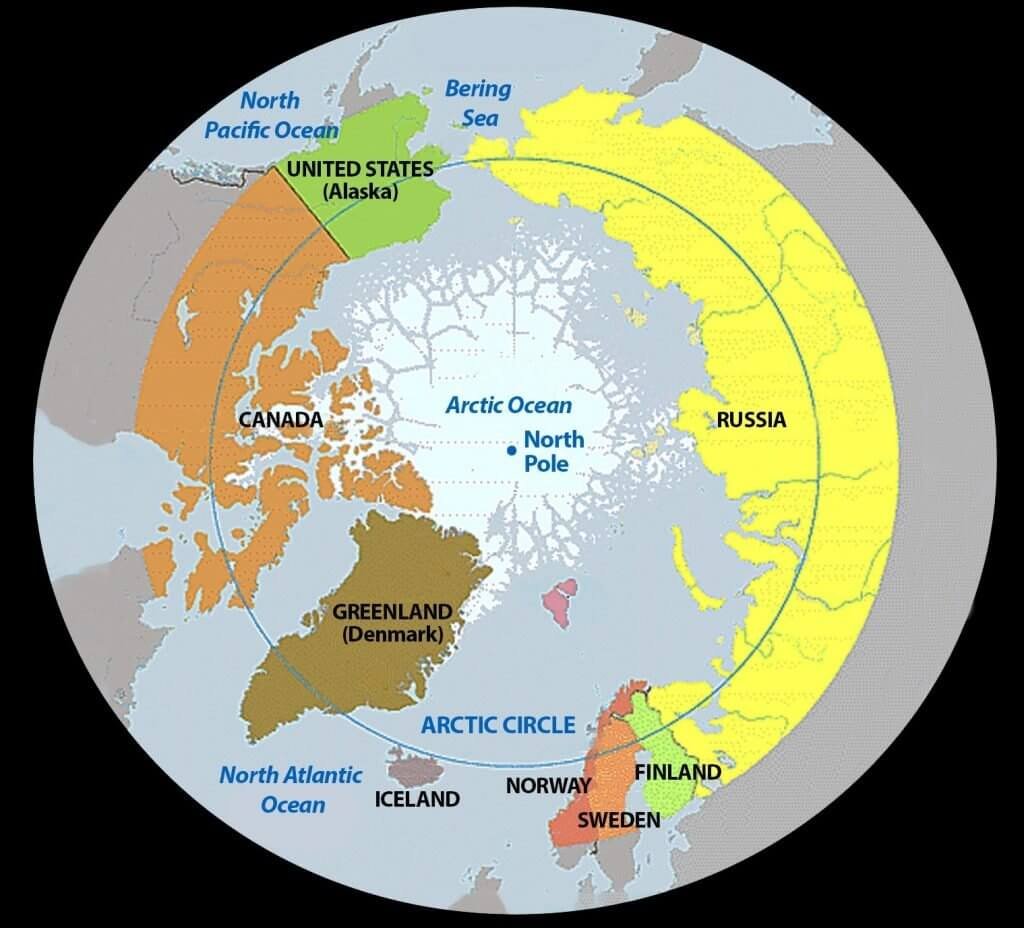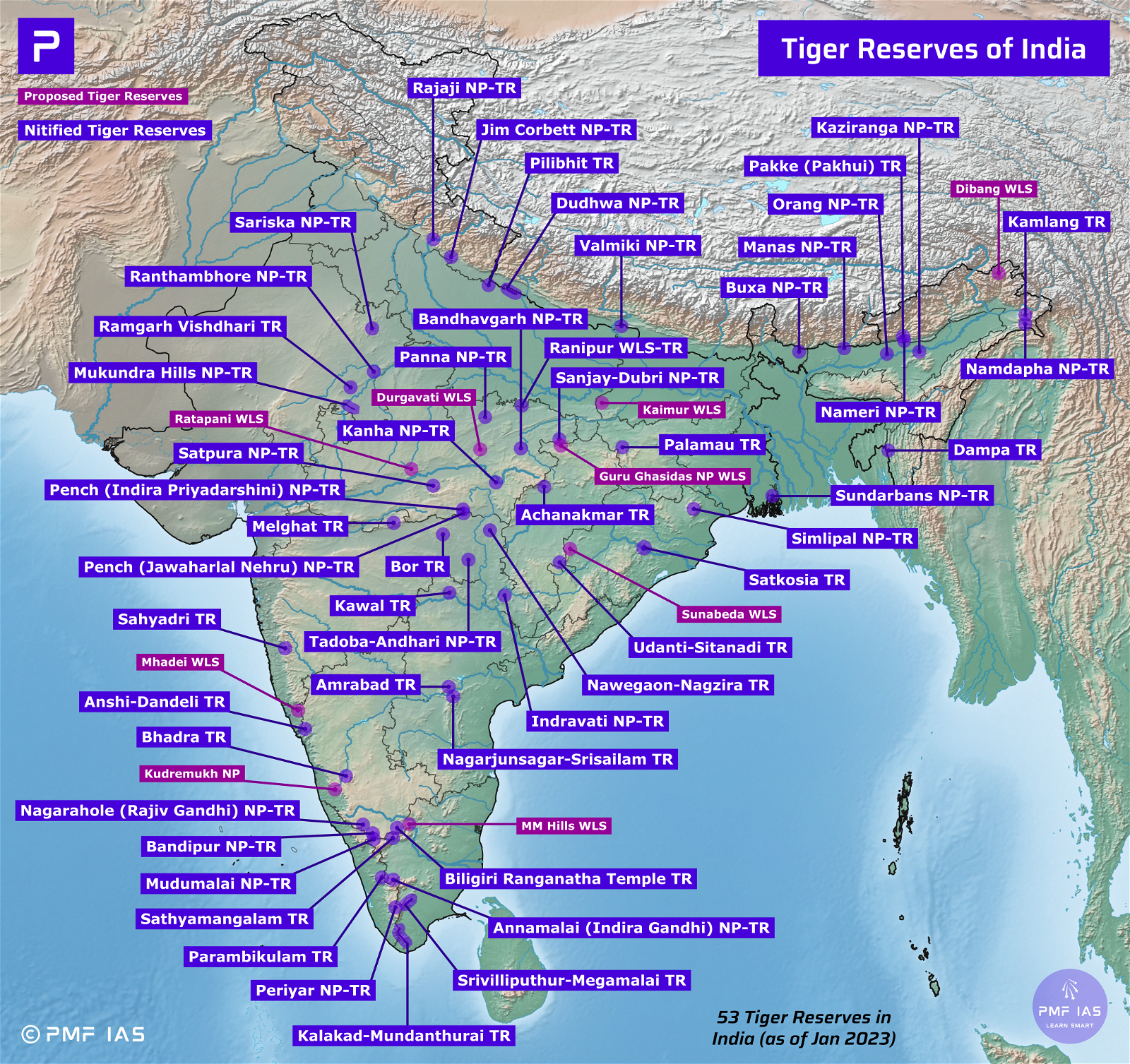
Current Affairs for UPSC Civil Services Exam – April 16, 2024
Subscribers of "Current Affairs" course can Download Daily Current Affairs in PDF/DOC
Subscribe to Never Miss an Important Update! Assured Discounts on New Products!
Must Join PMF IAS Telegram Channel & PMF IAS History Telegram Channel
{GS1 – Geo – EG – Mineral Resources} Hydrocarbons Formation & Extraction
- Context (TH): Understanding Hydrocarbon Formation and Extraction.
- Hydrocarbons in underground rock formations commonly exist in the forms of natural gas, coal, crude oil, and petroleum.
- These formations are created when a less resistant rock is covered by a more resistant one, trapping the hydrocarbons below. Without these formations, hydrocarbons would rise to the surface and disperse.
- The primary source of hydrocarbons in the underground rock is called kerogen.
- Kerogen can come from three sources: lakes, marine ecosystems, or terrestrial ecosystems.
- Rocks around kerogen get warmer and compact over time, causing kerogen to break down.
- Lacustrine kerogen produces waxy oils.
- Marine kerogen yields oil and gas.
- Terrestrial kerogen creates light oils, gas, and coal.
- The rock containing kerogen is called the source rock. Petroleum geologists find and study the source rock to understand its characteristics and ability to produce hydrocarbons.
- Petroleum geologists study rock formations using tools and techniques. They assess factors like the rocks’ porosity and permeability.
- Highly porous rocks can hold more hydrocarbons. More permeable rocks allow hydrocarbons to flow through them easily.
- They use observational data and modelling to estimate hydrocarbon reserves and report to regulatory bodies. If a location is deemed profitable, drilling for hydrocarbons begins.
|
{GS2 – IR – Arctic} India’s Arctic Imperative
- Context (TH): In March 2024, India’s first winter experience in the Arctic ended successfully.
- For over a decade, India’s National Centre for Polar and Ocean Research saw no reason for a winter mission to the Arctic, but that has changed recently.

Reasons for the growing interest in the Arctic
- Arctic warming: The faster-than-estimated warming of the Arctic and related impacts on climate led to a change in the needs.
- Trade route: India is seized of the opening up of Arctic Sea routes, primarily the Northern Sea Route, and would like to route Indian trade through the region, which would reduce shipping costs.
- Geopolitics: China’s growing investment in the Arctic and Russia’s decision to grant China expanded access to the Northern Sea Route increased India’s focus on the Arctic region.
Potential for collaboration
- Norway, the Present chair of the Arctic Council, has close ties with India. Both have collaborated to investigate changing conditions in the Arctic and Antarctic and their impact on South Asia.
- Denmark and Finland: Indian collaboration has come in areas such as waste management, pollution control, renewable energy, and green technology.
- Participation in Arctic Council’s working groups: India can play a greater role in tackling issues such as the blue economy, infrastructure, and responsible resource development.
- Responsible image: India’s ‘responsible stakeholder’ credentials result in greater collaboration scope.
Way forward
- India’s Arctic Policy: The policy must be followed in letter and spirit.
- Addressing environmental concerns: While the Indian government seems keen to benefit from seabed mining and resource exploitation in the Arctic, it needs a sustainable extraction mode.
To know more, visit > India’s Arctic Expedition.
{GS3 – Agri – Food Security} Suggestions to Improve India’s Food Security
- Context (IE): Suggestions to improve the agriculture food industry based on discussions at a forum on food security and climate change organised by the Asian Development Bank.
Focus on Transforming food systems
- Agriculture needs to produce more food, fibre, and biofuels with fewer resources due to India’s growing population.
- Efficiency in the land, water, labour, fertilisers, and machinery use is crucial.
- Increasing total factor productivity requires investment in agri-R&D, innovations, and extension services.
Invest in climate-resilient agriculture
- Extreme weather events from global warming threaten the production system.
- Last year’s El Nino effect caused a drop in agri-GDP growth from 4.7% to 0.7%.
- Knee-jerk reactions, such as export bans, stock limits, and selling government stocks at lower prices, are common to contain food inflation.
- The solution lies in investing in heat and flood-resistant seeds and improving water resource management. “More crop per drop” should be more than just a slogan; it should become a reality.
- Precision agriculture techniques like drips, sprinklers, and protected cultivation need wider adoption.
- About 78% of India’s freshwater is used for agriculture. Water wisely is crucial to prevent water shortages in cities. E.g. Recent Bengaluru Water Crisis.
Address logistical challenges and update regulatory frameworks
- By 2047, over two-thirds of India’s population will live in urban areas, compared to 36% currently.
- Rural-to-urban migration for better job opportunities is a natural process. This shift means food will need to be transported from rural areas to cities.
- A significant logistics revolution will be needed for transportation, stocking, processing, and retailing. Large-scale investments, primarily by the private sector, will be necessary.
- The government must update laws to facilitate this transformation. Many current laws date back to 1947 and may not be suitable for modern market needs.
- Market-aligned rules are needed to build efficient value chains and reduce post-harvest losses.
Address Fragmentation in Indian Agriculture
- Despite scaling up in various sectors like seed industry and processing, farming is becoming increasingly fragmented.
- The challenge is to unite smallholders through Farmer Producer Organisations (FPOs) or cooperatives.
- Similar to AMUL’s success in the milk sector, these institutions can create the scale needed by processors, retailers, and exporters. Institutional innovation like FPOs is crucial for inclusive development in India.
Ensure Nutritional Security
- Malnutrition rates, especially among children under 5, are alarming. With stunting affecting 35% of children, there are concerns about their future as a productive workforce.
- Improvements require actions like sanitation, women’s education, and immunisation. Fortifying staples with micronutrients is crucial.
- While the government has started with zinc-rich rice and wheat, golden rice with beta-carotene should also be considered.
- Countries like Australia, New Zealand, Canada, and the US have declared golden rice safe. Even Bangladesh and the Philippines have allowed trials.
- Since rice is a primary crop, fortifying it can address malnutrition in children.
Establish a healthy Public-Private Partnerships
- The government alone cannot accomplish all these tasks. Public PPPs are crucial for the future of food systems.
- The private sector can create efficient value chains and develop climate-resilient and nutritious seeds.
- The government needs to establish a supportive policy framework. If the government can implement PLI-type schemes for industry, it can do the same for food systems transformation.
Improve Farmers’ Incomes
- Subsidy regimes for fertilisers and food need to be re-evaluated to improve farmer’s income.
- Shifting from price subsidies to direct income transfers can save 25-30% of the Rs 4 trillion subsidy.
- These savings can then be reinvested into food systems to enhance resilience and nutrition.
{GS3 – Envi – Conservation} Protection of the Indigenous Territory
- Context (DTE): The 23rd session of the UN Permanent Forum on Indigenous Issues started in New York on April 15.
- Participants noted that while recognition of indigenous territories is growing, it is not happening fast enough.
- Indigenous Peoples play a crucial role in protecting land, but they receive less than 1% of climate finance.
- Climate change and conservation policies often overlook the role of Indigenous Peoples and their territories in protecting the Earth. The current session will also discuss finances and address this issue.
Indigenous Territory Significance
- Indigenous territory or indigenous land is an area inhabited and exclusively possessed by indigenous people. Indigenous territories (IT) are incredibly biodiverse and urgently need protection.
- ITs cover about 22% of the Earth’s land surface and are home to 80% of the remaining biodiversity.
- Approximately 500 million people, around 6.2% of the global population, live in these areas.
- Until recently, only “protected areas” (PA) and “other effective area-based conservation measures” (OECM) were considered for conservation.
- ITs have been overlooked in global conservation discussions despite their millennia-old existence and role in maintaining key ecosystems.
Protection of Indigenous Territories in Brazil
- In 2023, Brazil proposed protecting 80% of the Amazon by 2025. This requires declaring, recognising, and titling over 100 million hectares of Indigenous Peoples’ territories in the Amazon.
- However, progress has been slow in recognising Indigenous territories (ITs) in the Amazon. Between 2021 and 2023, only about 7 million hectares of ITs were recognised.
Kunming Montreal Global Biodiversity Framework
Other effective area-based conservation measures
|
{GS3 – Envi – Laws} Center releases “Deemed” Forest report
- Context (IE): Complying with SC order, the Centre makes ‘deemed’ forest reports public. As many as 27 states and Union Territories (UT) have furnished details.
Background
- Public Interest Litigation — Ashok Kumar Sharma, IFS (Retd.) & Ors -Vs- Union of India & Ors challenged the 2023 amendment to the Forest (Conservation) Act of 1980.
- Issue: The 2023 amendment said that FCA would be applicable only on land notified as forest in government records, which was against the Supreme Court’s order in the Godavarman case (1996).
- Godavarman case (1996): Supreme Court extended the definition of forest to the dictionary meaning.
- Key concern was that the 2023 amendment excludes 1.97 lakh sq km of deemed forests.
- Expert committees formed pursuant to the 1996 order were supposed to identify ‘deemed’ forests irrespective of their notification, recognition, or ownership status.
- LaFarge judgment (2011): The Supreme Court had asked for detailed information on the location of forests with geo-referencing and clear demarcation.
- The expert committees’ reports were made public in February 2024 following a Supreme Court order.
- The Supreme Court’s February order also stated that the states must continue to follow the dictionary definition of forests when applying FCA for the time being.
Concerns in the report
- Delay: As per the Godavarman case order, expert committees were to identify forest areas within a month, but the reports were made public after a delay of 28 years.
- No locations: Most states had only provided broad data on such deemed forests without details of their boundaries or exact locations.
- Generic data: Jharkhand, Karnataka, Uttarakhand, Andaman and Nicobar islands, Bihar, and Dadra & Nagar Haveli have given generic figures with no data on ‘un-classed forests’.
- Old data: Some states, like Uttarakhand, have provided data dating back to the state’s formation.
- Only broad categories: Some states included only broad categories of forest areas as controlled by “government, individuals, degraded, and plantations.”
- Insufficiency of data: Arunachal Pradesh reported that 61.7% of the state’s forest was unclassed state forest and needs “extensive field study” supported by satellite imagery & ground-truthing.
- Contrary to JPC submission: The government’s submission to a joint parliamentary committee (JPC) of the Lok Sabha said that “deemed forests, identified by the expert committees of the states, have been taken on record and hence the provision of the Act will be applicable in such lands also”.
To know more, visit > Forest Legislations.
{GS3 – S&T – Tech} Hybrid Pitches
- Context (TH): Himachal Pradesh Cricket Association (HPCA) stadium will be the first BCCI-accredited venue with a new ‘hybrid pitch’.
- The pitch is installed by Netherlands-based ‘SISGrass‘ (a part of the SIS Pitches group of companies).
- SISGrass entered India after ICC approval for hybrid surfaces in T20 and 50-over matches.

About Hybrid Pitches
- A hybrid sports pitch combines natural turf with a small percentage of polymer fibre for resilience.
- Most of the installations still have mostly natural grass. Only a small amount, 5%, of polymer fibre is added, maintaining the pitch’s natural feel and characteristics.
- It is believed to be more resilient to stresses created during play while prolonging the life of the pitch, guaranteeing an even bounce and easing pressure on ground staff.
- The Universal machine has been used to install SISGrass. The Universal machine used in Dharamshala will create more hybrid pitches in Ahmedabad and Mumbai.
- SISGrass has installed pitches in various English grounds like Lord’s and The Oval.
|
{Prelims – S&T – Defence} DUSTLIK
- Context (PIB): The Indian Army contingent left for the 5th India-Uzbekistan joint military Exercise, DUSTLIK. The exercise will take place from April 15th to 28th, 2024, in Termez, Uzbekistan.
- The Indian Army contingent includes two Women Officers, one from the Regiment of Artillery and the other from the Army Medical Corps.
- DUSTLIK is held annually, alternating between India and Uzbekistan.
- The previous edition occurred in Pithoragarh, India, in February 2023.
- Exercise DUSTLIK aims to enhance military cooperation and joint capabilities for operations in mountainous and semi-urban terrain.
- The focus will be on physical fitness, joint planning, tactical drills, and special arms skills.
- It will also strengthen defence cooperation and bilateral relations between India and Uzbekistan.





![PMF IAS Environment for UPSC 2022-23 [paperback] PMF IAS [Nov 30, 2021]…](https://pmfias.b-cdn.net/wp-content/uploads/2024/04/pmfiasenvironmentforupsc2022-23paperbackpmfiasnov302021.jpg)











